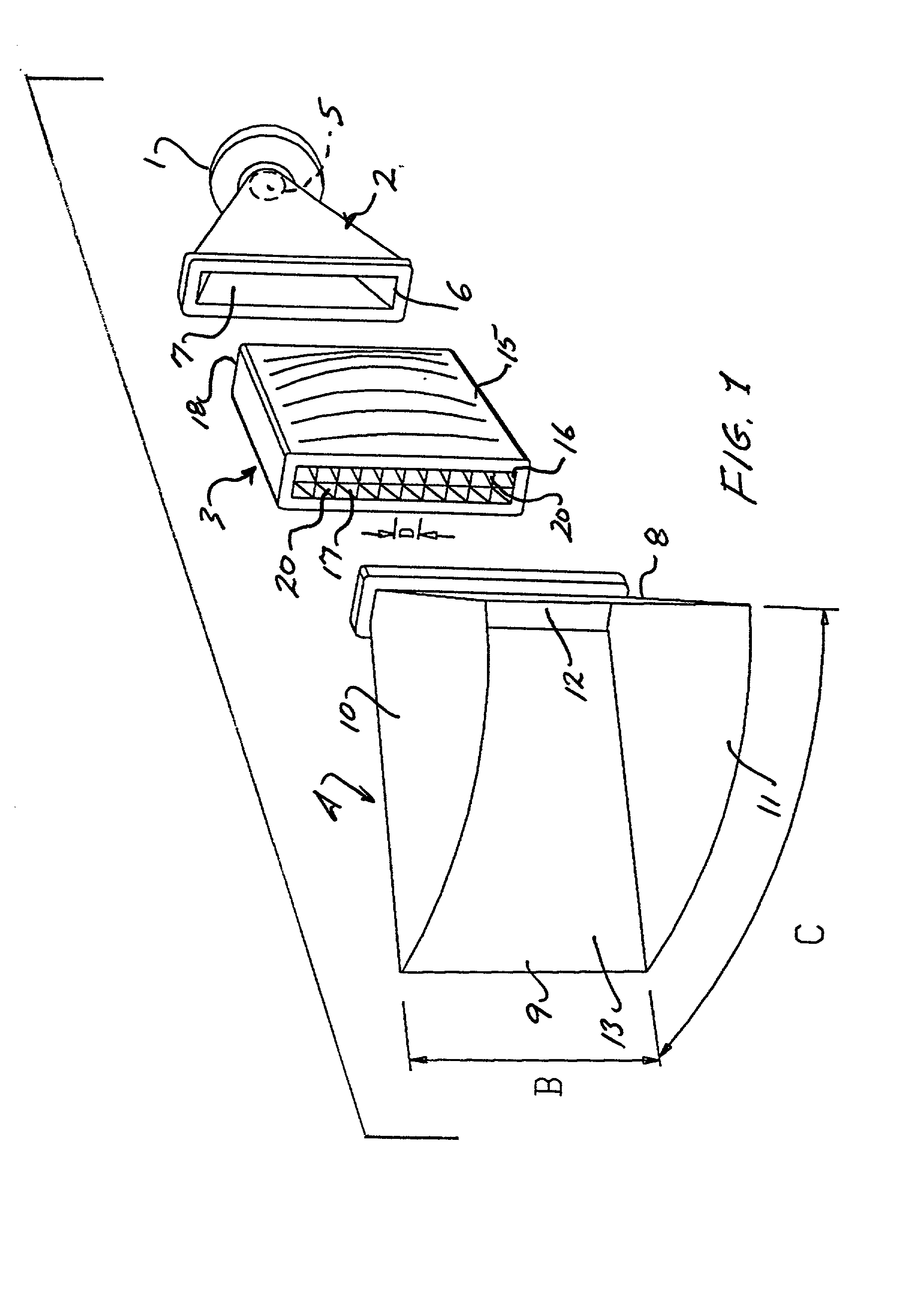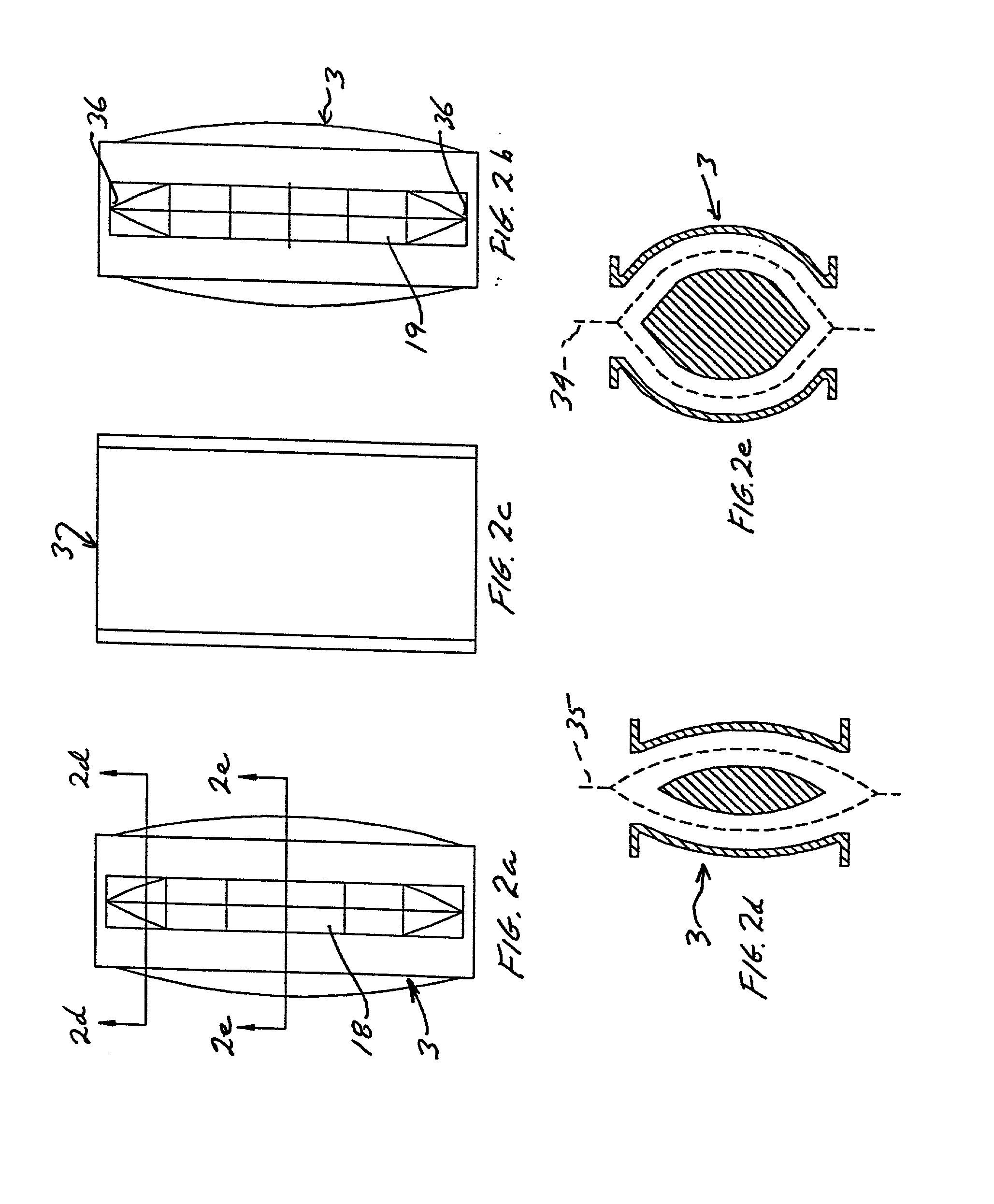Wave shaping sound chamber
a sound chamber and wave shaping technology, applied in the field of audio loudspeaker systems, can solve the problems of low efficiency of arrays of direct radiators, multiple source arrays, and inability to construct arrays of such devices, and achieve the effect of zero acoustic interference and suitable flatness
- Summary
- Abstract
- Description
- Claims
- Application Information
AI Technical Summary
Benefits of technology
Problems solved by technology
Method used
Image
Examples
Embodiment Construction
[0063] With reference to FIG. 1., the present invention includes an acoustic transducer 1, a primary waveguide shown in the form of a simple horn 2, a wave shaping sound chamber 3 and a secondary waveguide 4. The primary waveguide 2 comprises an inlet aperture 5 and an outlet aperture 6 that are connected by an expanding wedge shaped acoustic conduit 7.
[0064] The secondary waveguide 4 comprises sidewalls 8 and 9, and upper and lower walls 10 and 11 that define the desired properties of the sound wave that will be transmitted by the waveguide. The secondary waveguide also includes an inlet aperture 12 and an outlet aperture or mouth 13.
[0065] The wave shaping sound chamber 3 comprises an outer shell 15 and an inner body 16 forming a conduit 17 for the transmission and shaping of a sound wave and also includes an inlet aperture 18 and an outlet aperture 19. For best performance vanes 20 are placed within the sound chamber spaced at a distance "D" with respect to one another and which ...
PUM
 Login to View More
Login to View More Abstract
Description
Claims
Application Information
 Login to View More
Login to View More - R&D
- Intellectual Property
- Life Sciences
- Materials
- Tech Scout
- Unparalleled Data Quality
- Higher Quality Content
- 60% Fewer Hallucinations
Browse by: Latest US Patents, China's latest patents, Technical Efficacy Thesaurus, Application Domain, Technology Topic, Popular Technical Reports.
© 2025 PatSnap. All rights reserved.Legal|Privacy policy|Modern Slavery Act Transparency Statement|Sitemap|About US| Contact US: help@patsnap.com



